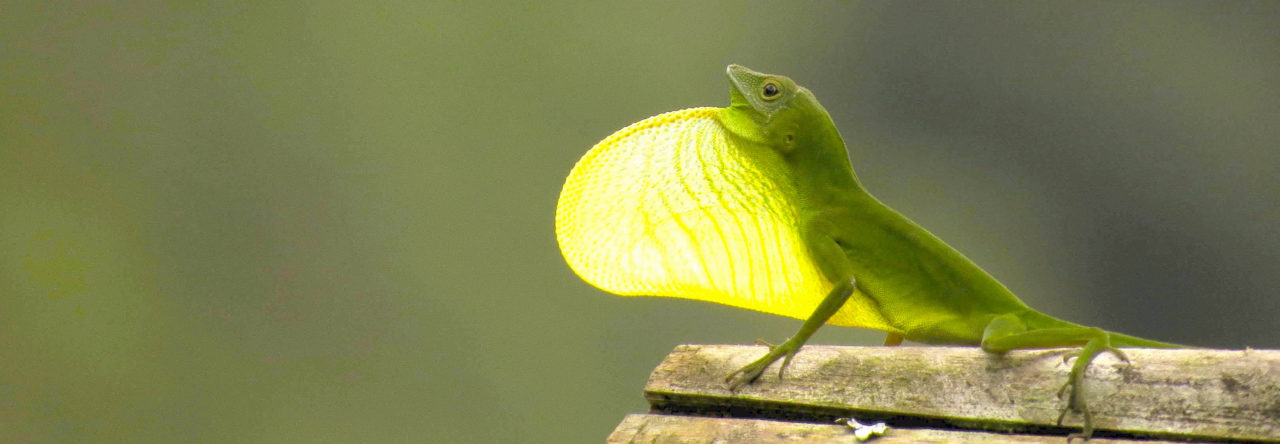
Polymorphism in dorsal patterns of female Anolis humilis. Color version of photo in Parmelaere et al., Biol. J. Linn. Soc. (2001), courtesy E. Parmelaere.
The topic of female dorsal pattern polymorphism has been broached several times in Anole Annals posts. Such polymorphism occurs in some species and not others; a comprehensive survey by Paemelaere et al. demonstrated that it was much more common in mainland anoles than in island species, and in some clades more than in others.
But the bigger question is: does dorsal pattern matter to the ladies? Earlier this year, Cox and Calsbeek documented a lack of selective advantage to any of three back patterns in populations of Bahamian A. sagrei. Now, in another study by Paemelaere et al., no difference in survival is found between three pattern morphs in Costa Rican A. humilis.
That’s not to say that there is no evidence that back pattern is subject to natural selection. Paemelaere et al. documented that the proportion of females with the three patterns remained nearly constant in four surveys across a 25 year period. If the different patterns were selectively neutral, we might expect to see random fluctuations in frequency through time, so this invariance may suggest that the polymorphism has reached a selective equilibrium. On the other hand, A. humilis occurs at high population densities, suggesting that genetic drift may only operate slowly, so that only minor fluctuations might be expected over such a time period. Moreover, a number of other studies have found evidence that back pattern matters, at least in some species at some times (see here). Given the substantial differences in these patterns, one would certainly be tempted to suggest that there must be some reason why the polymorphism occurs in females, but only in some populations, but not in males. Seems like a question ready amenable to investigation in other localities.
Paemelaere, E., Guyer, C., & Dobson, F. (2011). Survival of Alternative Dorsal-Pattern Morphs in Females of the Anole Norops humilis Herpetologica, 67 (4), 420-427 DOI: 10.1655/HERPETOLOGICA-D-11-00010.1
- Evolution in Real Time on Lizard Island - March 23, 2025
- Spider Snags Adult Anolis osa - March 22, 2025
- An Homage to the Green Anoles of New Orleans - March 21, 2025


Rich Glor
Interesting topic and challenging research questions. I would have a hard time quantifying pattern in many species, where we see some extremely striped or dumbbell type patterns as well as everything in between.